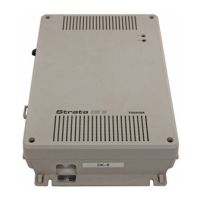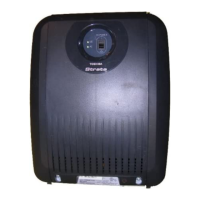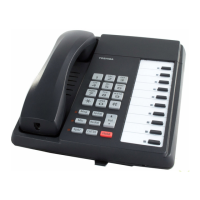
Do you have a question about the Toshiba Strata CTX and is the answer not in the manual?
| Maximum Extensions | Up to 672 |
|---|---|
| Maximum Trunks | Up to 192 |
| Maximum CO Lines | Up to 192 |
| ACD | Yes |
| Voice Mail Integration | Yes |
| Number of Ports | Varies by configuration |
| Networking | Yes |
| VoIP Support | Yes |
| Features | Call Forwarding, Conference Calling |
| Power Requirements | 100-240V AC, 50/60Hz |
| Dimensions | Varies by system size |
| Weight | Varies by configuration |
Explains how to navigate and interpret the content of this user guide.
Details the formatting and symbols used throughout the document.
Introduces the IPT2000-series models, their features, and capabilities.
Details the DKT3000-series telephone models connectable to the Strata CTX system.
Describes the DKT2000-series speakerphone models and their specifications.
Explains the function of fixed buttons on telephone dial pads for standard operations.
Describes programmable buttons for various functions like Line, Feature Access, and One Touch.
Details LCD display information and the function of LCD control buttons/soft keys.
Advises users to check system features with the CTX System Administrator.
Details three methods to originate calls: Hot Dialing, Spkr Button, and Handset.
Explains how to answer calls using Handset, Speaker, or Handsfree Answerback.
Explains how to use LEDs and LCD to see/retrieve messages and manage waiting indicators.
Explains how to transfer calls, including blind transfer, camp-on, and transfer to Voice Mail.
Details how to set up and manage conference calls with multiple parties.
Covers Hold, Exclusive Hold, Automatic Hold, and Consultation Hold features.
Guides on adjusting handset/speaker volume and LCD contrast settings.
Explains how to use the LCD screen for navigation and information display.
Explains the function of soft keys and lists soft key prompts with definitions.
Explains the use of Account Codes for billing, tracking, and line restriction.
Covers activation, cancellation, and usage of automatic redial and callback features.
Explains System Call Forward and Station Call Forwarding settings and procedures.
Covers Call Pickup, Group Pickup, parking calls, and retrieving parked calls.
Details how to make emergency calls and emergency pages.
Explains Speed Dial for dialing numbers with shorter codes and accessing directories.
Covers Call Monitor, Direct Transfer, Soft Keys, and Call Recording.
Lists feature access codes for using various telephone functions.
Explains how to use the DKT3014's directory display and name search functions.
Details the process for storing names for Personal Speed Dial numbers.
Describes Digital Add-on Modules (DADM), their models, and associated buttons/LEDs.
Explains the DSS console's function, button layout, and LED status indicators.
Covers calling stations, transferring calls, and using speed dial via consoles.
Details Flexible Directory Numbering, Centrex Feature Buttons, and Ringing Repeat.
Explains how line(s) can have programmed ring delays for alternate answering.
Provides definitions for programmable buttons and their assigned functions.
Explains how users can customize telephone features via programming mode.
Details how to program features onto flexible buttons for one-touch access.
Lists feature access codes for using various telephone functions.
Shows the location of Feature Buttons (FB) on different DKT3000 models.
Guides on entering, exiting, and using telephone programming mode.
Explains how to turn DKT2000 mode on/off for compatibility.
Details how to set headset transmit volume levels for DKT3000 series.
Steps to reset an IP telephone to default settings.
Instructions for configuring IP telephone network settings.
How to configure button beeps, noise cancellation, and headset volume.
Steps to enter and exit Administrator Mode, including password entry.
How to program Phone, Door, System SD, Station SD, CO Line, and DNIS names.











